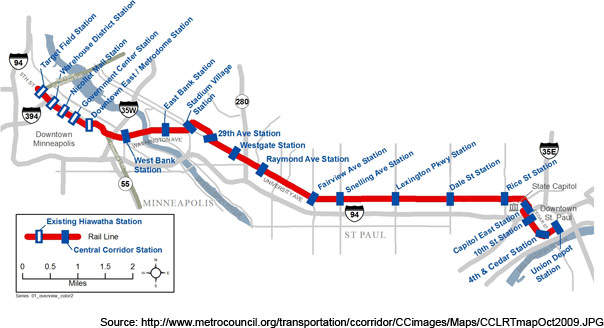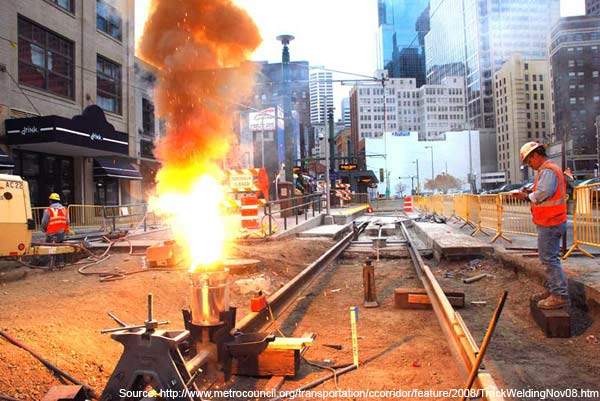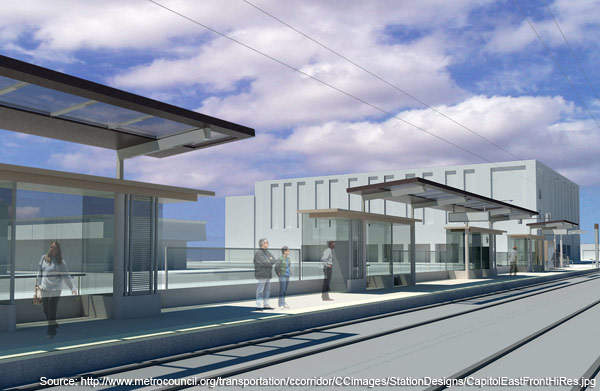Previously known as Central Corridor, the METRO Green Line is a light rail transit system developed in Minnesota, US. It is the second light rail transit (LRT) in Minnesota, the first one being the Hiawatha line. The transit system connects the cities of Minneapolis and Saint Paul. The project was developed in order to reduce regular congestion in the region and to provide better access to automobile traffic.
Minnesota’s capital city Saint Paul and the state’s largest city Minneapolis are twin cities, which collectively form the 13th largest metropolitan area in the US, with a population of 3.5 million.
The public transit systems in the metropolitan area include LRT systems and bus services. The rail transit system in Minneapolis has two lines, the Hiawatha line and the Northstar commuter rail.
The Hiawatha line, also known as the yellow line, connects Minneapolis to Bloomington, while the Northstar commuter rail or blue line connects Big Lake with a station at Target Field.
The Metro Transit, which operates the LRT systems and bus services in the region, is the operator of the METRO Green Line. Construction work began in mid-2010 and was completed by 2013. Commercial operations began in June 2014.
METRO Green Line project
The initial planning for the project dates back to 1981. The Alternatives Analysis and Environmental Impact Statement (EIS) of the project, prepared by Ramsey County Regional Railroad Authority (RCRRA), were released in April 2006.
In June 2006, the project was transmitted to the Metropolitan Council (MC), who supported it along with the METRO Green Line coordinating committee.
The MC submitted a New Starts application to the US Federal Transit Administration (FTA), as well as a request to start preliminary engineering work. The FTA was involved in the evaluation of the LRT and guiding the project to meet federal requirements.
The preliminary engineering work, which was carried out by the MC, was approved by the FTA in December 2006.
Along with the other main bodies involved in the project, the MC finalised the station number and locations in December 2006, as well as the cost of the project and management plans. The local funding sources were also identified in December 2006. The project’s scope was approved by the MC in February 2008.
The METRO Green Line comprises a transit-pedestrian mall on Washington Avenue on University of Minnesota’s (UoM) East Bank campus, a vehicle maintenance facility on Ramsey County, 18 stations along the line, and also includes the development of the infrastructure for three future stations.
The project’s final EIS, Record of Decision and Letter of No Prejudice were approved by the FTA in August 2009. Following the approvals, the project applied for permission to enter the final design. The MC approved the execution of the advance utility contract in the same year.
The transfer of the public utility began in September 2009.
Construction
Construction on the line began in late 2010. Construction on the line on University Avenue in Saint Paul was completed by November 2011.
The track bed construction and installation work from Downtown Saint Paul to the fourth street was completed by mid-2011. The bridge in Washington Avenue was reduced to one lane in 2012. The line construction work from Downtown Saint Paul to Cedar Street began in 2012.
The tracks of Green Line were connected to the Blue Line/Hiawatha tracks near the Metrodome Station in September 2012. Majority of the communications and electrical systems were installed in 2013.
METRO Green line route
The 18km METRO Green Line is an east-westbound line that connects the two major cities of Minnesota. The highly commuted regions of downtown Minneapolis and downtown St. Paul are connected through the UoM along University Avenue.
The Target Field station is on the eastern terminal of the corridor, with the western terminal on the Saint Paul Union Depot. The line shares stations with the already existing Hiawatha line and Downtown East / Metrodome station.
Financing for the METRO Green line
The project received funds from the US federal and Minnesota governments. Out of the total funds, 50% were awarded by the FTA and the remaining 50% were awarded through state and county funds.
The state and county funds comprises 30% in financing from the new Counties Transit Improvement Board (CTIB), 9% from the state government, 7% from Ramsey,3% from Hennepin County, 1% from the Metropolitan Council and less than 1% from the city of St. Paul and Central Corridor Funders Collaborative. The funds from CTIB were generated through the metro county transit sales tax.
According to the initial plan in 2006, the project was estimated to cost $941m. The plan included building 15 new stations as part of the project.
In January 2010, it was announced that three more stations were to be added to the LRT at a cost of $15.6m. The stations were proposed on University Avenue at Western, Victoria and Hamline avenues. Approximately half of the costs were funded by the federal government.
The remaining cost was funded by a coalition of local foundations known as the Central Corridor Funders Collaborative. The total project cost now stands at $956.6m.
Rolling stock
The rolling stock includes 31 new light rail vehicles. Each vehicle has 66 seats and additional space to enable another 70 people to stand comfortably.
A $153m contract for the supply of 41 light rail vehicles (31 for Central Corridor and 10 for the Hiawatha Line) was awarded to Siemens Transportation Systems. The first vehicle was delivered in 2012.
Contractors
The $113.8m contract to build three miles of the western Central Corridor was awarded to a partnership of Ames Construction and CS McCrossan. A $205.1m contract to build the seven mile portion of the line at Saint Paul was awarded to Walsh Construction.
Light rail transit line future plans
The future LRT line, Southwest Corridor (Green Line extension), will connect Minneapolis to the south-western suburb of Eden Prairie. The project, which is underway, is the fourth rail line planned for Minneapolis. Construction is anticipated to begin in 2017.






